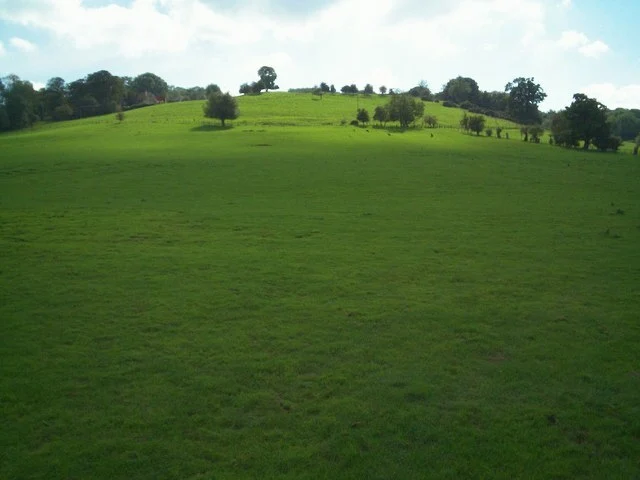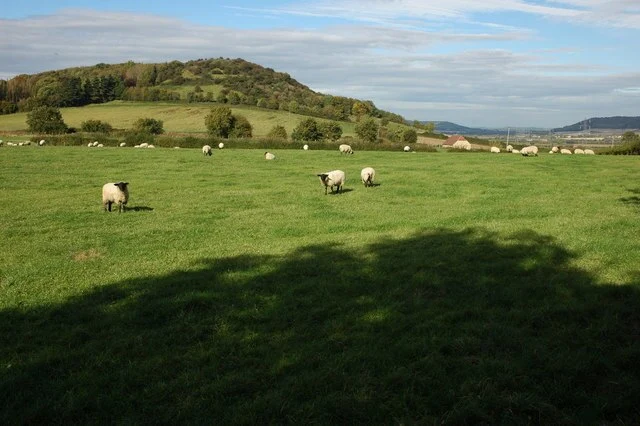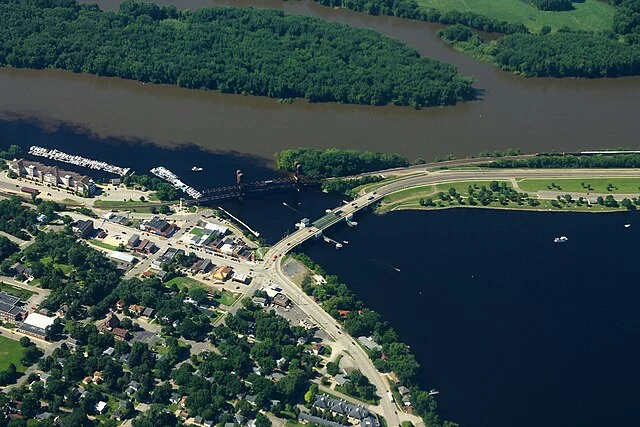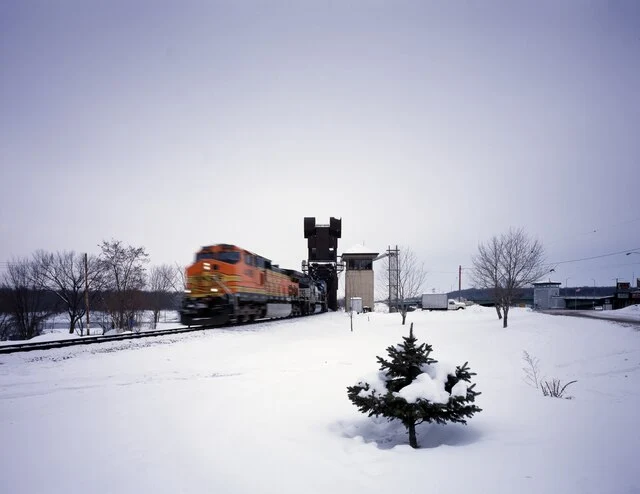Have you ever wondered what makes Prescott, Arizona such a special place to live or visit? The secret lies in its exceptional weather patterns that set it apart from the rest of the Grand Canyon State. Unlike the scorching desert heat that Arizona is famous for, Prescott offers something truly unique – a genuine four-season climate that feels more like Colorado than the Sonoran Desert.
Nestled in the high country of central Arizona, Prescott enjoys a climate that’s both surprising and delightful. This charming city sits at an elevation that creates weather patterns so distinct from typical Arizona expectations that newcomers often do a double-take when they experience their first Prescott winter snow or cool summer evening.
Understanding Prescott’s Unique Climate Zone
High Desert Climate Characteristics
Prescott’s weather story begins with its classification as a high desert climate. But what does that really mean for you? Picture this: while Phoenix residents are cranking up their air conditioning in May, Prescott folks might still be enjoying open windows and cool breezes. This high desert classification means Prescott experiences significantly lower humidity levels throughout the year, creating that crisp, clean air feeling that makes every breath feel refreshing.
The high desert climate brings with it dramatic temperature swings between day and night. Don’t be surprised if you need a sweater for your evening stroll after spending the afternoon in shorts and a t-shirt. This temperature variation is one of the defining characteristics that makes Prescott’s weather so distinctive and, frankly, so comfortable for most people.
Elevation’s Impact on Weather Patterns
Standing proudly at 5,368 feet above sea level, Prescott’s elevation is the secret ingredient in its weather recipe. For every 1,000 feet you climb in elevation, the temperature drops by about 3-5 degrees Fahrenheit. This means that while the valley floors of Arizona are baking in triple-digit heat, Prescott enjoys temperatures that are typically 15-20 degrees cooler.
This elevation doesn’t just affect temperature – it influences everything from precipitation patterns to seasonal variations. The higher altitude means Prescott sits in a different weather zone entirely, often catching mountain weather systems that bypass the lower desert regions. It’s like living in a completely different climate while still being in Arizona.
Monthly Weather Breakdown in Prescott

Spring Weather (March-May)
March Weather Patterns
March in Prescott is when winter begins its graceful exit. You’ll experience average high temperatures around 60-65°F, with nighttime lows dipping into the 30s. This month is known for its variability – you might wake up to a light frost and end the day basking in sunshine. March typically brings about 2-3 inches of precipitation, often in the form of gentle spring rains that awaken the desert landscape.
The wind can be particularly active during March, as weather systems transition from winter to spring patterns. It’s not uncommon to experience breezy days that remind you why they call it “windy March.” But don’t let that deter you – these winds often bring crystal-clear skies and that famous Arizona sunshine.
April Climate Conditions
April is when Prescott truly begins to shine. Average high temperatures climb to a comfortable 70-75°F, while nighttime lows settle into the 40s. This is considered one of the most pleasant months in Prescott, with mild days perfect for outdoor activities and cool evenings ideal for sleeping with windows open.
Precipitation decreases significantly in April, with the month typically receiving only 1-2 inches of rain. The combination of comfortable temperatures and relatively dry conditions makes April a favorite among both residents and visitors. The spring blooms are often at their peak, creating a postcard-perfect backdrop for any outdoor adventure.
May Temperature Trends
May marks the transition into Prescott’s warm season, with average highs reaching 80-85°F and lows in the 50s. This is when you’ll start to appreciate Prescott’s elevation advantage over lower Arizona cities. While Phoenix might be hitting 100°F, Prescott residents are enjoying perfect weather for hiking, golfing, and outdoor dining.
The month is typically dry, receiving less than an inch of precipitation on average. This dry period sets the stage for the upcoming summer months and creates those picture-perfect blue skies that Arizona is famous for. May evenings are particularly delightful, with temperatures cooling to comfortable levels perfect for outdoor activities.
Summer Weather (June-August)
June Weather Overview
June brings the official start of summer to Prescott, but it’s unlike summer anywhere else in Arizona. Average high temperatures reach 85-90°F, which feels downright cool compared to the 110°F+ temperatures common in Phoenix and Tucson. Nighttime lows in the 60s mean you’ll actually want to open your windows for natural cooling.
This month is typically the driest of the year, with precipitation often measuring less than half an inch. The dry conditions and warm temperatures create perfect conditions for outdoor recreation. June is when Prescott truly shows off its climate advantages, offering summer warmth without the oppressive heat found elsewhere in the state.
July Heat and Monsoons
July is Prescott’s warmest month, with average highs reaching 90-95°F. But here’s where it gets interesting – this is also when the monsoon season begins. The North American Monsoon brings moisture from the Gulf of Mexico, creating afternoon and evening thunderstorms that provide both relief from the heat and spectacular sky shows.
These monsoon storms are a defining feature of Prescott’s summer weather. The humidity increases slightly during this period, but the frequent storms help moderate temperatures and create some of the most dramatic weather displays you’ll ever witness. Lightning dancing across the sky while rain cools the air is a summer evening ritual that residents cherish.
August Monsoon Season
August represents the height of monsoon season in Prescott. While temperatures remain warm with highs in the upper 80s to low 90s, the increased cloud cover and frequent afternoon storms create a more moderate feel. This month typically receives 2-3 inches of precipitation, most of it coming from these dramatic thunderstorms.
The monsoon storms usually follow a predictable pattern: clear mornings, building clouds in the early afternoon, and thunderstorms in the late afternoon or evening. These storms can be intense but are usually brief, leaving behind cooler temperatures and that distinctive smell of rain on desert soil that locals call “petrichor.”
Fall Weather (September-November)
September Transition
September marks the beginning of fall in Prescott, though the transition is gradual. Average high temperatures drop to the mid-80s, while nighttime lows settle into the 50s. The monsoon season typically ends by mid-September, leading to clearer skies and more stable weather patterns.
This month often brings some of the most pleasant weather of the year. The oppressive heat of summer (what little there was) begins to fade, while the crisp mornings and warm afternoons create perfect conditions for outdoor activities. September is when many residents feel like they’re living in paradise.
October Perfect Weather
October is arguably Prescott’s most perfect month. Average high temperatures settle into the comfortable 70-75°F range, with nighttime lows in the 40s. The humidity drops to its lowest levels of the year, creating that crisp, clear air that makes everything seem more vibrant.
This month typically receives minimal precipitation, often less than an inch. The combination of perfect temperatures, low humidity, and abundant sunshine creates ideal conditions for hiking, festivals, and outdoor events. It’s no coincidence that many of Prescott’s major events are scheduled for October.
November Cooling Trends
November brings the first hints of winter to Prescott. Average high temperatures drop to the mid-60s, while nighttime lows can dip into the 30s. This is when you’ll start to notice the days getting shorter and the air getting that crisp feel that signals winter’s approach.
Precipitation remains low in November, typically measuring around an inch. However, this month can bring the first possibility of snow, though it’s usually light and doesn’t stick around long. The changing season is visible in the deciduous trees around town, creating a beautiful autumn display.
Winter Weather (December-February)
December Snow Possibilities
December officially brings winter to Prescott, with average high temperatures dropping to around 55-60°F and nighttime lows in the 20s and 30s. This is when Prescott’s elevation really shows its influence, as the city can receive several inches of snow while the valleys remain clear.
Snow in Prescott is usually light and beautiful rather than heavy and problematic. The city typically receives 10-15 inches of snow annually, with most of it falling between December and February. When it does snow, it often melts quickly on south-facing slopes while lingering in shaded areas, creating a picturesque winter landscape.
January Cold Spells
January is typically Prescott’s coldest month, with average highs around 50-55°F and lows that can drop into the teens on the coldest nights. But don’t let these temperatures fool you – even Prescott’s coldest days are often accompanied by brilliant sunshine that makes the chill feel less harsh.
The month usually brings 1-2 inches of precipitation, often in the form of snow. January can produce some of Prescott’s most beautiful winter days, with fresh snow covering the surrounding mountains and forests while the city itself basks in crystal-clear sunshine. These are the days when you understand why people fall in love with Prescott’s climate.
February Weather Warming
February marks the beginning of winter’s retreat in Prescott. Average high temperatures start to climb back toward 60°F, while nighttime lows moderate into the 30s. This month often brings a mix of winter and early spring weather, with some days feeling distinctly cold while others hint at the warmth to come.
Precipitation in February averages around 1-2 inches, still potentially including snow but with an increasing chance of rain. By late February, you’ll start to notice the days getting noticeably longer, and the afternoon sun will begin to feel warm on your face again.
Prescott’s Famous Four Seasons

Why Prescott Has Distinct Seasons
Unlike most of Arizona, Prescott experiences four genuine seasons, each with its own distinct character. This seasonal variation is primarily due to the city’s elevation and latitude, which place it in a transition zone between the hot desert climates of lower Arizona and the cooler mountain climates of the state’s higher elevations.
The seasonal changes in Prescott are gradual but definite. You’ll notice the subtle shifts in temperature, daylight hours, and precipitation patterns that mark the progression from one season to the next. This seasonal rhythm creates a natural calendar that residents learn to anticipate and appreciate.
Seasonal Temperature Variations
The temperature range between Prescott’s seasons is substantial enough to require different clothing and activities for each time of year. Summer highs in the 90s give way to winter lows in the 20s, creating a temperature spread of about 70 degrees throughout the year.
This variation might seem dramatic, but it’s what creates the seasonal diversity that makes Prescott so special. Spring brings renewal and moderate temperatures, summer offers warmth without oppressive heat, fall provides perfect conditions for outdoor activities, and winter adds a touch of snow and cozy indoor time.
Precipitation Patterns and Rainfall
Annual Rainfall Totals
Prescott receives an average of 18-20 inches of precipitation annually, which is significantly more than most Arizona cities. This precipitation comes in two distinct seasons: winter rains from Pacific storm systems and summer monsoons from the Gulf of Mexico.
The distribution of this rainfall is uneven throughout the year. The driest months are typically May and June, while the wettest are usually July, August, and the winter months of December through February. This pattern creates distinct wet and dry seasons that influence everything from landscaping choices to outdoor activity planning.
Monsoon Season Impact
The North American Monsoon typically arrives in Prescott around early July and continues through September. This weather pattern brings moisture from the Gulf of Mexico, creating the dramatic afternoon and evening thunderstorms that define Prescott’s summer weather character.
During monsoon season, the humidity increases from its typical 20-30% to levels that might reach 40-50%. While this is still relatively low compared to humid climates, it represents a significant change for the desert. The increased moisture creates more cloud cover, moderates temperatures, and produces those spectacular lightning displays that make monsoon season so memorable.
Snow and Winter Precipitation
Prescott’s winter precipitation comes primarily from Pacific storm systems that move across the southwestern United States. These storms can bring both rain and snow, depending on the temperature and elevation.
Snow in Prescott is usually light and scenic rather than heavy and problematic. The city’s infrastructure is designed to handle occasional snow events, and the snow typically melts quickly on roads and sidewalks while creating beautiful winter scenes in parks and forested areas. Most snow events produce 1-4 inches, though larger storms can occasionally bring 6-8 inches or more.
Extreme Weather Events in Prescott

Drought Conditions
Like much of the American Southwest, Prescott can experience extended periods of drought. These dry spells can last for months or even years, significantly impacting local water resources and increasing fire danger in the surrounding forests.
During drought periods, Prescott’s already low precipitation levels can drop even further, creating challenges for both natural ecosystems and human activities. The city has developed water conservation programs and drought management strategies to help cope with these periodic dry spells.
Severe Thunderstorms
Monsoon season can bring severe thunderstorms to Prescott, complete with heavy rain, hail, and strong winds. These storms can produce flash flooding in low-lying areas and create hazardous driving conditions due to reduced visibility and standing water.
While these severe storms are relatively rare, they can be intense when they occur. The combination of steep terrain and hard desert soils can create rapid runoff during heavy rains, leading to flash flood warnings in washes and low-lying areas around the city.
Wildfire Weather Conditions
Prescott’s location in the midst of extensive forests means that fire weather is always a concern. The combination of dry conditions, low humidity, and wind can create dangerous fire weather conditions, particularly during late spring and early summer before the monsoon arrives.
The city and surrounding areas have experienced several significant wildfires over the years, including the tragic Yarnell Hill Fire in 2013. Understanding fire weather conditions and maintaining defensible space around homes is an important part of living in Prescott’s fire-prone environment.
Best Times to Visit Prescott
Optimal Weather Months
If you’re planning a visit to Prescott, the optimal weather months are typically April through May and September through October. These periods offer the most comfortable temperatures, lowest precipitation, and most stable weather conditions.
Spring (April-May) provides mild temperatures perfect for outdoor activities, while fall (September-October) offers comfortable days and cool evenings ideal for hiking and sightseeing. Both seasons feature relatively low precipitation and abundant sunshine, creating ideal conditions for exploring everything Prescott has to offer.
Seasonal Activities and Weather
Each season in Prescott offers its own unique activities and attractions. Spring is perfect for wildflower viewing and hiking, summer brings outdoor festivals and evening events, fall offers ideal conditions for exploring the surrounding forests, and winter provides opportunities for enjoying snow activities in nearby mountain areas.
The seasonal weather patterns help dictate the local calendar of events. Many outdoor festivals and events are scheduled for the mild spring and fall months, while winter activities focus on indoor attractions and cozy gatherings.
How Prescott’s Weather Compares to Other Arizona Cities
Phoenix vs. Prescott Climate
The difference between Phoenix and Prescott weather is dramatic and immediately noticeable. While Phoenix swelters in summer temperatures that regularly exceed 110°F, Prescott enjoys summer highs in the 90s. The elevation difference of about 4,000 feet creates this temperature contrast that makes Prescott a popular summer retreat for Phoenix residents.
Winter differences are equally striking. While Phoenix rarely sees freezing temperatures, Prescott can experience snow and sub-freezing conditions. Phoenix gets about 8 inches of rain annually, while Prescott receives more than double that amount. The climate difference is so significant that the two cities feel like they’re in different states.
Flagstaff vs. Prescott Weather
Flagstaff, located about 90 miles north of Prescott at 7,000 feet elevation, experiences even more dramatic seasonal variations than Prescott. While Prescott enjoys four distinct seasons, Flagstaff’s winters are longer and more severe, with significantly more snow and colder temperatures.
Flagstaff typically receives 80+ inches of snow annually compared to Prescott’s 10-15 inches. Summer temperatures in Flagstaff are also cooler than Prescott’s, making Prescott the warmer choice for those who want four seasons without the extreme cold of higher elevations.
Living with Prescott’s Weather Year-Round

Clothing and Preparation Tips
Living in Prescott requires a more diverse wardrobe than most Arizona cities. You’ll need everything from shorts and t-shirts for summer days to warm coats and boots for winter weather. The key is layering – Prescott’s daily temperature variations mean you might need to add or remove clothing throughout the day.
A good rule of thumb is to dress in layers year-round. A light jacket or sweater is almost always a good idea, even on warm days, because temperatures can drop significantly once the sun goes down. For winter, having proper cold-weather gear is essential, including warm coats, hats, gloves, and boots for snowy conditions.
Home Weather Preparedness
Prescott homes need to be prepared for a wider range of weather conditions than typical Arizona residences. This means having both heating and cooling systems, proper insulation for cold weather, and possibly backup power sources for storm-related outages.
Many Prescott homes feature fireplaces or wood-burning stoves for winter warmth and ambiance. Air conditioning is still important for summer comfort, though it’s not used as extensively as in lower-elevation Arizona cities. Proper weatherproofing and insulation are crucial for maintaining comfortable indoor temperatures year-round.
Weather Resources and Forecasting
Local Weather Services
Prescott is served by the National Weather Service office in Flagstaff, which provides detailed forecasts and weather warnings for the area. Local media outlets also provide weather coverage tailored to Prescott’s unique climate conditions.
The National Weather Service issues various watches and warnings for the Prescott area, including winter storm warnings, flash flood warnings, and fire weather warnings. Understanding these alerts and taking appropriate precautions is an important part of living safely with Prescott’s weather.
Weather Apps and Websites
Popular weather apps and websites like Weather.com, AccuWeather, and Weather Underground provide detailed forecasts for Prescott. Local apps and websites often offer more specific information about conditions in the Prescott area, including radar and satellite imagery.
For outdoor enthusiasts, specialized weather resources like Mountain-Forecast.com can provide more detailed information about conditions in the surrounding mountains and forests. These resources are particularly valuable for planning hiking, camping, and other outdoor activities.
Conclusion
Prescott, Arizona offers a truly unique weather experience that sets it apart from anywhere else in the state. With its four distinct seasons, moderate temperatures, and dramatic daily temperature variations, Prescott provides a climate that combines the best of desert and mountain weather patterns.
Whether you’re considering a visit or thinking about making Prescott your home, understanding the local weather patterns will help you make the most of what this special city has to offer. From snowy winter mornings to perfect fall afternoons, from dramatic monsoon storms to crystal-clear spring days, Prescott’s weather creates a year-round symphony of seasonal changes that residents and visitors alike learn to love and appreciate.
The city’s elevation-influenced climate proves that Arizona isn’t just about scorching desert heat – it’s about diverse weather patterns that can satisfy almost anyone’s preferences. In Prescott, you really can have it all: four seasons, moderate temperatures, abundant sunshine, and just enough weather variety to keep life interesting.
Frequently Asked Questions
1. Does it really snow in Prescott, Arizona?
Yes, Prescott receives an average of 10-15 inches of snow annually, primarily between December and February. The snow is usually light and scenic rather than heavy and problematic, often melting quickly on roads while creating beautiful winter landscapes in parks and forested areas.
2. How hot does it get in Prescott during summer?
Summer high temperatures in Prescott typically reach 85-95°F, which is significantly cooler than other Arizona cities. The elevation of 5,368 feet keeps temperatures about 15-20 degrees cooler than Phoenix, making Prescott a popular summer retreat for desert dwellers.
3. What is monsoon season like in Prescott?
Monsoon season in Prescott runs from early July through September, bringing afternoon and evening thunderstorms that create spectacular lightning displays. These storms provide relief from summer heat and account for a significant portion of the area’s annual rainfall.
4. When is the best time to visit Prescott for perfect weather?
The best times to visit Prescott are April through May and September through October. These periods offer comfortable temperatures, minimal precipitation, and ideal conditions for outdoor activities like hiking and sightseeing.
5. How does Prescott’s weather compare to Phoenix?
Prescott’s weather is dramatically different from Phoenix due to its 4,000-foot elevation advantage. While Phoenix experiences extreme summer heat exceeding 110°F, Prescott enjoys summer highs in the 90s. Prescott also receives more than double Phoenix’s annual rainfall and experiences actual winter weather with possible snow.

